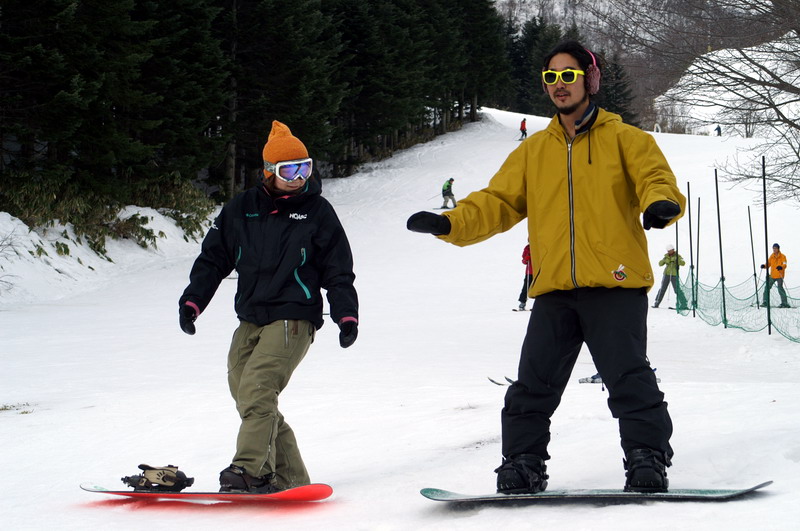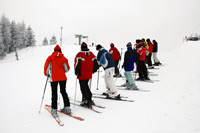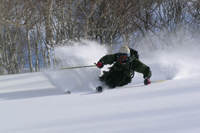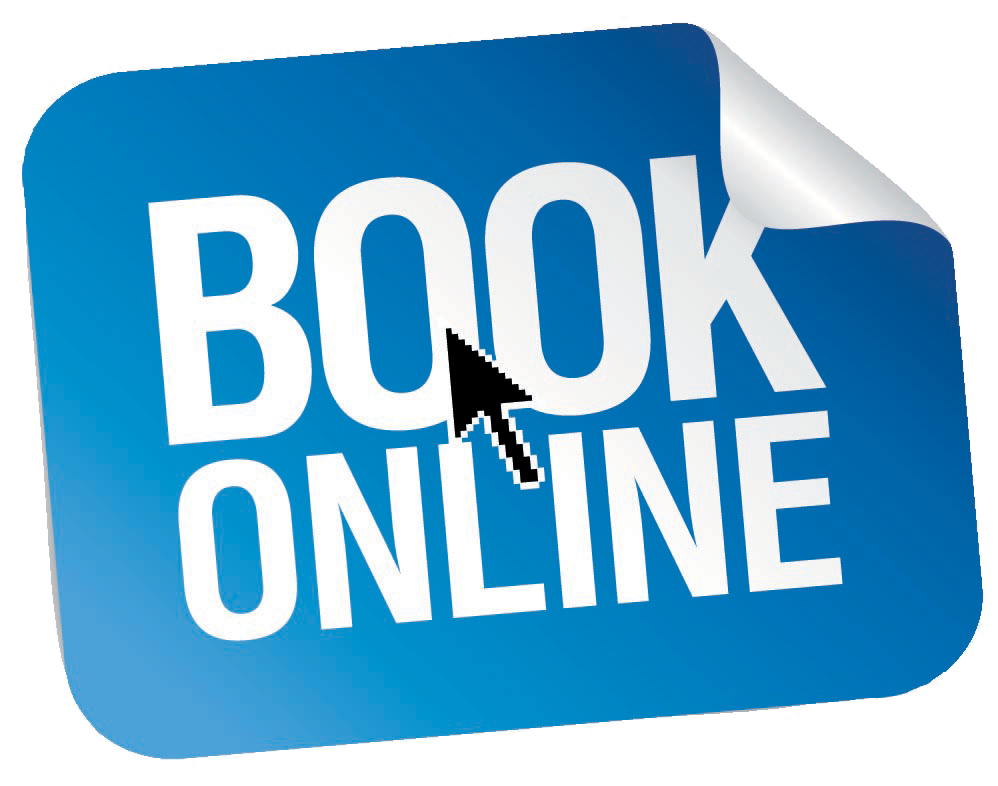お知らせ: NOASCの無料リゾート送迎で近隣のスキーエリアをご体験ください!

FAQ - NOASC Facts and Questions (Q&A) (7)
- Things to bring to your NOASC Ski /Snowboard lesson:
Ski lessons (First Timer to Level 6) & Snowboard lessons (First Timer to Level 6)
|
|
|
|
Please bring a great smile, a healthy "can do it" attitude, and an adequate fitness level for learning to ski or snowboard. If you are a beginner, expect to fall over. |
|
|
|
|
|
Your own skis/boots/poles or snowboard/boots. If you don't have your own, don't worry. NOASC has an extensive and modern rental/hire range from which you can choose from. Beginner, All mountain, Demo, through to your FAT powder skis, or long length powder snowboards. "Get the right tools for the job": start by having the correct type and length of snowboard/skis for your lesson. Have your boots be professionally fitted, binding settings adjusted properly, before your lesson starts. We also have some great discounts to go along with your lesson package. Be sure to enquire at NOASC about our latest range of rentals and availability, before your lesson day. |
|
|
|
|
|
Make sure you wear a helmet. While wearing a helmet is not mandatory, it is highly recommended. Apart from protecting your head in case you fall, or in the case, another skier/snowboard collides with you, it will help to keep you head warm, hold those goggles on for when it starts to snow, etc. If you don't have a helmet, NOASC has a wide range of rental helmets available. |
|
|
|
|
|
Goggles. A good pair of goggles make it so much easier when it starts to snow, and/or if you are skiing/snowboarding in varying terrain, snow conditions and weather across the mountain in more advanced lessons, to see where you are skiing/snowboarding. Goggles with "mirror" lenses for sunny days, and "yellow" lenses for overcast and snowy days should help you see the waybetter. |
|
|
|
|
|
Gloves. A good pair of gloves (and beanie/took/knit cap for your head if you are not wearing a helmet) to keep your hands warm. You hands/head/feet are the first things that feel the cold. If you have a good pair of boots, make sure you also do yourself a favor, and have a good pair of gloves also. While Mitten type gloves keep you hands warmer on cold days, they are not recommended for snowboarding lessons, where you need your fingers to attach straps and release straps when getting in and out of your snowboard bindings. Also, the more you expect to have your hands in the snow, the warmer (more waterproof in spring) you want them to be. |
|
|
|
|
|
Appropriate wear for the conditions on the day. Based on your lesson type, expected conditons on the day, consider face-masks, neck warmers, and ski/snowboard jacket/pants with powder skirts built-in. HOT Tip #: In Niseko, and surrounding resorts, electronic lift passes are used to get access to the lift through a gate. These passes need to be placed close to/brought close to a sensor pad on your left side, when going through the gate. Ski/snowboard wear with an arm/sleeve pocket on the outside is a real help. If not, maybe some gloves with a built-in lift pass pocket on the top side of the glove make things easier. |
For Intermediate and above Ski lessons (Level 6+) & Snowboard lessons (Level 6+) |
|
|
|
Consider a small backpack. If you will be going off-piste, or outside the resort boundaries (backcountry) you might need some basic backcountry safety equipment and a . We also have some great discounts to go along with your lesson package. Be sure to enquire at NOASC about our latest range of rentals and availability, before your lesson day. |
|
|
|
|
|
Appropriate ski/snowboard type and length. These days, with the every changing technologies "Get the right tools for the job": start by having the correct type and length of snowboard/skis for your lesson. If you are going to be skiing/snowboarding off-piste (in powder) consider hiring/demo'ing a longer snowboard or fatter skis. You will be amazed at the difference. |
|
|
Backcountry Safety & Rescue gear. On these lessons you will most likely be skiing/snowboarding outside the resort boundaries and require an avalanche beacon, probe pole, snow shovel, snow saw, and other snow study items. Please contact NOASC to find out what you require. |
|
|
Other equipment based on your lesson duration. |
Other:
|
|
| |
Appropriate Insurance. All participants must read and sign an “Assumption of risk and Wavier of liability” form prior to participating on a NOASC tour. Persons under the age of 20 years of age will require a parent or guardian to sign also. |
| Although, basic insurance is included in the tour price, we recommend persons to have their own adequate insurance. For non-Japanese residents, we strongly recommend that you have adequate travel insurance coverage prior to participation. | |
What Level Snowboarder Are You?
Often, one of the first questions you will be asked when booking a snowboard lesson is, "What level snowboarder are you?". A lot of people cannot tell you directly their level, but tend to describe the run/trails and/or the frequency they snowboard each season.

Around the world and as happens in Japan, most snowboard schools use a similar classification system for describing your snowboarding ability and grouping snowboarders into one of several categories normally referred to as beginner, intermediate, advanced, and expert. NOASC is no different. Although at NOASC, unlike most other snowboard schools, we continue to instruct and educate you off-piste; beyond the boundaries of the ski resort, into the backcountry.
The following guide will provide you information about how to evaluate your own snowboarding ability and help you to choose the right NOASC snowboard lesson.
- Level 0 - You have never snowboarded before
- Level 1 - You have snowboarded once before, fell-over lots, forgotten how to turn and stop.
- Level 2 - You have snowboarded before and you can do basic single turns. Can side slip on both heel-side and toe-side edges with both feet in your bindings.
- Level 3 - You can link large radius (sweeping) turns together and stop on gentle beginner slopes. You can ride the beginner lift.
- Level 4 - You can confidently link turns together in both directions and control your speed on green and some red (coded as blue in US, Aus., N.Z.) runs/trails. Occasionally, head off-piste.
- Level 5 - You can snowboard confidently on all green runs and most red runs. Starting to enjoy a little off-piste snowboarding in a variety of snow conditions. Not confident on bumpy run/trails.
- Level 6 - You can perform linked turns on all red runs (incl. similar off-piste runs) of varying sizes, with good speed control. Sometimes, black runs under good conditions. You are beginning to carve your turns. Enjoying off-piste powder and open tree runs.
- Level 7 - You are confident making various types of turns, on and off-piste (in the open trees) on all red runs, and most black runs. You are seeking more challenging terrain inside and outside of the ski resort boundaries. Your carving your turns on all red run/trails and confident on bump runs.
- Level 8 - You can carve, link dynamic turns, on all terrain, in all snow conditions. Riding the trees is not a problem. Regularly snowboarding outside the ski resort on half-day backcountry lessons.
- Level 9 - You can make strong, linked and dynamic turns, on and off-piste in a variety of conditions, in and outside the resort boundaries and in the backcountry.
- Level 10 - You snowboard all terrain, in all conditions, confidently. You regularly snowboard in the backcountry. You wish to explore multi-day touring.
For a more detailed explanation of our snowboarding levels, please click here. NOTE: Access to the backcountry from the ski resort is through gates.
What Level Skier Are You?
Often, one of the first questions you will be asked when booking a ski lesson is, "What level skier are you?". A lot of people cannot tell you directly their level, but tend to describe the run/trails and/or the frequency they skier each season.

Around the world and as happens in Japan, most ski schools use a similar classification system for describing your skiing ability and grouping skiers into one of several categories normally referred to as beginner, intermediate, advanced, and expert. NOASC is no different. Although at NOASC, unlike most other ski schools, we continue to instruct and educate you off-piste; beyond the boundaries of the ski resort, into the backcountry.
The following guide will provide you information about how to evaluate your own skiing ability and help you to choose the right NOASC Ski lesson.
- Level 0 - You have never skied before
- Level 1 - You have skied once before, but you cannot stop.
- Level 2 - You have skied before and you can stop on beginner slopes with a wedge (snow plough) stop.
- Level 3 - You can stop and are comfortable turning on beginner green ski runs. You can ride the beginner lifts.
- Level 4 - You are starting to bring your skis together at the end of each turn, and you are comfortable skiing green runs.
- Level 5 - Your skis are parallel earlier in your turns. You ski green and easy red (referred to as blue runs in Australia, North America and New Zealand) ski runs.
- Level 6 - You are improving your parallel turns and skiing mostly red ski runs.
- Level 7 - You are confident making various types of turns, on and off-piste (off the groomed ski runs) with good pole planting on all red runs, and some black runs.
- Level 8 - You can ski with controlled, consistent parallel turns on piste, on red runs, and your are improving on black runs. You are developing your off-piste powder and tree skiing.
- Level 9 - You can make strong, linked and dynamic turns, on and off-piste in a variety of conditions, in and outside the resort boundaries.
- Level 10 - You ski off-piste confidently and outside the resort boundaries regularly. You are a confident powder skier in all terrain.
- Level 11 - You ski all terrain, in all conditions, confidently. You regularly ski in the backcountry.
For a more detailed explanation of our skiing skill levels, please click here.
Things to bring when going Rafting:
| Spring (April - June) , Autumn (September - October) | |
| Even though you will be wearing semi dry suits over your clothes, it is advised that you wear clothes you don't mind if they get wet. For example, track suit top and bottoms, a fleece top and bottoms, and thermals. We recommend clothes that are non-restricitve and allow free movement of your limbs. | |
| We also advise that you do not wear cotton made clothes, as they absorb moisture and fail to insulate the body when they become wet. | |
| Summer (July - August) | |
| NOASC recommends you wear clothes you won't mind if they get wet, such as an old tee shirt and shorts, your swimmers, etc. On hot days your swimmers, with a polyester tee shirt, along with our life jackets over the top provides ample protection against the weather. Make sure you don't forget your sunscreen. | |
| With regards to footwear, please wear sport sandals, some old runners, etc. Make sure your sport sandals have a supporting ankle strap to help prevent you loosing them if you happen to fall into the river. | |
| For clients who do not possess the above foot wear NOASC will provide rental wet boots (size 22cm to 32cm) free of charge. | |
| For clients with feet size under 22cm long, please provide your own foot wear, or contact NOASC for advice. | |
| All Seasons (Including winter) | |
| Most persons participating in river activities get wet. We highly recommend that you bring with you a towel, a dry change of clothes, and some money to purchase your NOASC Adventure tour photos at the end of your tour. | |
| Please leave all valuables, accessories (watches, necklaces, bracelets, etc.) at home, as these items are not allowed to be brought on tour. | |
| For persons who wear glasses, or contact lenses, we ask you to consider not wearing these items whilst on tour. To help prevent possible damage or lose of these items on tour, we strongly advise you to wear swimming goggles, use sport straps to help secure your glasses to your head, and/or consider using disposable contact lenses when participating in a NOASC adventure activity. | |
| Tours are generally not affected by rain. In the case NOASC cancels a tour on the day of the tour, we will endeavour to contact you as soon as possible. | |
| NOASC Tour Conditions | |
| To help prevent accidents, injuries to oneself and other persons on tour, persons that are under influence of alcohol, pregnant, suffer from an injury that may be adversely affected by one’s participation, may be refused participation. Please contact our staff if you have any questions about this matter. | |
| All participants must read and sign an “Assumption of risk and Wavier of liability” form prior to participating on a NOASC tour. Persons under the age of 18 years will require a parent or guardian to sign also. | |
| Although, basic insurance is included in the tour price, we recommend persons to have their own adequate insurance. For non-Japanese residents, we strongly recommend that you have adequate travel insurance coverage prior to participation. | |
 What Level Skier Are You?
What Level Skier Are You?
Often, one of the first questions you will be asked when booking a ski lesson is, "What level skier are you?". A lot of people cannot tell you directly their level, but tend to describe the run/trails and/or the frequency they skier each season.
Around the world and as happens in Japan, most ski schools use a similar classification system for describing your skiing ability and grouping skiers into one of several categories normally referred to as beginner, intermediate, advanced, and expert. NOASC is no different. Although at NOASC, unlike most other ski schools, we continue to instruct and educate you off-piste; beyond the boundaries of the ski resort, into the backcountry.
The following guide will provide you information about how to evaluate your own skiing ability and help you to choose the right NOASC Ski lesson.
| Skier Level | Level Name | Description | Skiing Phase | Off-piste Level | Ski Run & Terrain Difficulty |
| 0 | First Timer | This lesson caters to people whom have never skied before getting use to your equipment, standing, sliding, and moving around on your skis. | Beginner | - | Flat/Beginner Slope |
| 1 | Beginner | Skiers whom are starting to slide and stop, maybe able to turn a little. | Novice - people whom have never skied to skiers making turns and mastering the green runs on the mountain | - |
Green |
| 2 | Intermediate Beginner | Skiers whom have confidence doing a snowplough/wedge turn, looking for more advice on how to link their turns and improve their ability to turn. Skiers that haven't skied for a long time, and maybe don't remember how to turn. Great place to refresh your skills. | Novice - see above. | - | Green |
| 3 | Advanced Beginner | You have confidence linking turns on green runs, getting on and off the beginner lifts, and you are looking to progress to some new and more challenging ski runs. | Novice - see above. | - | Green and sometimes Red runs. |
| 4 | Beginner Intermediate | You can ski all type of green runs on the lower mountain confidently and are ready to start skiing red (blue overseas) runs using a mixture of snowploughing/wedge turns and beginner parallel turns. Experimenting with the occassional off-piste snow run a little. | Intermediate - this is a wide area and refers to skiers who can link turns, on green or red(blue) runs, or use a parallel turn technique on easy black runs. Gaining confidence in various snow conditions. | First timer Off-piste | Green and Red |
| 5 | Intermediate | Level 5 is for skiers whom can confidently make turns on red ski runs, and are seeking to improve their parallel turn technique. Enjoying the fresh powder occasionally. | Intermediate - see above. | Beginner Off-Piste Powder | Red |
| 6 | Advanced Intermediate | You are becoming more and more confident on red runs, on and off-piste, skiing with parallel turns. | Intermediate - see above. | Intermediate Off-Piste | Red and sometimes Black |
| 7 | Advanced | Skier at this level are confident on red and some black runs, and are varying their skiing line, turn radius, based on snow conditions and the terrain. | Advanced - The area covers skiers who are linking turns on steeper runs, on and off-piste, in a variety of snow conditions. | Lift Access Backcountry | Black and off-piste |
| 8 | Mountain Explorer | You can ski comfortably, using a variety of turns, on steep terrain, tree runs, and in varying depths of powder. You have basic knowledge and experience in using backcountry equipment. | Advanced - see above. | Novice Backcountry | Black and off-piste |
| 9 |
Backcountry |
Skiers at this level are comfortable at skiing all terrain in all conditions, on and off-piste, and outside the resort boundaries. You may have completed a Backcountry Avalanche Awareness course. | Expert - Skiers at this phase are competent skiing in all snow conditions in and outside the resort boundaries. They possess the knowledge and skill to ski in the backcountry on half day to multiday tours. | Half Day Backcountry | All Terrain |
| 10 | Backcountry Explorer | You are seeking to improve your off-piste skiing skills, backcountry skiing technique and safe travel skills. You normally have your own backcountry equipment. | Expert - see above. | Full Day Backcountry | All Terrain |
| 11 | Backcountry Tourer | Skiers at this level regulary ski in the backcountry and are wishing to learn more about overnight snow camping techniques, advanced touring techniques. | Expert - see above. | Multi-Day/Tourer | All Terrain |
Duis autem vel eum iriure dolor in hendrerit in vulputate velit esse molestie consequat, vel illum dolore eu feugiat nulla facilisis. At vero eos et accusam et justo duo dolores et ea rebum. Stet clita kasd gubergren, no sea takimata sanctus est Lorem ipsum dolor sit amet. Lorem ipsum dolor sit amet, consetetur sadipscing elitr, sed diam nonumy eirmod tempor invidunt ut labore et dolore magna aliquyam erat, sed diam voluptua. At vero eos et accusam et justo duo dolores et ea rebum.
Duis autem vel eum iriure dolor in hendrerit in vulputate velit esse molestie consequat, vel illum dolore eu feugiat nulla facilisis. At vero eos et accusam et justo duo dolores et ea rebum. Stet clita kasd gubergren, no sea takimata sanctus est Lorem ipsum dolor sit amet. Lorem ipsum dolor sit amet, consetetur sadipscing elitr, sed diam nonumy eirmod tempor invidunt ut labore et dolore magna aliquyam erat, sed diam voluptua. At vero eos et accusam et justo duo dolores et ea rebum.
NOASC Latest Blog Posts
-
 プライベートスノーボードレッスン
投稿者: Administrator投稿日時: %2022/%01/%16(%PM) %16:%1月 カテゴリ: NOASC Member's Ski & Snowboard School Blog
プライベートスノーボードレッスン
投稿者: Administrator投稿日時: %2022/%01/%16(%PM) %16:%1月 カテゴリ: NOASC Member's Ski & Snowboard School Blog -
 NOASC Niseko Canyoning Summer 2017
投稿者: Administrator投稿日時: %2017/%06/%19(%AM) %07:%6月 カテゴリ: NOASC Member's Canyoning Blog
NOASC Niseko Canyoning Summer 2017
投稿者: Administrator投稿日時: %2017/%06/%19(%AM) %07:%6月 カテゴリ: NOASC Member's Canyoning Blog -
 Winter Rafting in Niseko, Hokkaido, Japan
投稿者: Administrator投稿日時: %2016/%12/%09(%AM) %09:%12月 カテゴリ: NOASC Member's Rafting/Ducky Blog
Winter Rafting in Niseko, Hokkaido, Japan
投稿者: Administrator投稿日時: %2016/%12/%09(%AM) %09:%12月 カテゴリ: NOASC Member's Rafting/Ducky Blog



.jpg)



crop201by134.jpg)


